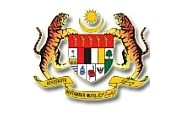Packet Based (IP) Radio Access Network
Presented by Kasu Venkat Reddy (Cisco Systems) [bio] Slides
Mobile network infrastructures are quickly evolving as mobile operators expand beyond voice to bring high-speed services available from IP networks and the Internet to subscribers.
The result is the emergence of networks that are becoming mobile versions of the high-speed Internet or a "mobile Internet".
This session explains the strategy which helps mobile operators deliver what some analysts predict will be a 100 fold increase in mobile data traffic by 2013.
One of the key areas in mobile networks, ripe for transformation in the rush to deliver robust mobile Internet services, is the Radio Access Network (RAN). Mobile operators must dramatically reduce the cost per bit in their current backhaul solutions while providing transport for third generation (3G) technologies, the next wave of Long Term Evolution (LTE) technologies, and traditional technologies.
The move to the all-IP RAN is the single largest infrastructure challenge facing mobile operators. This session explores the strategy recommended for mobile operators to implement an IP RAN backhaul network that allows decoupling from the radio technology as they migrate to an all-IP RAN.
This strategy allows mobile operators to cost-effectively provide the bandwidth, backhaul scalability, affordable transport, and intelligent network features necessary to support the Connected Life, the Internet-everywhere experience.
As devices in the RAN evolve to support IP, Ethernet, and other transport types, mobile operators can replace and upgrade portions of the RAN, such as base stations, in a more graceful, and cost-efficient manner.







